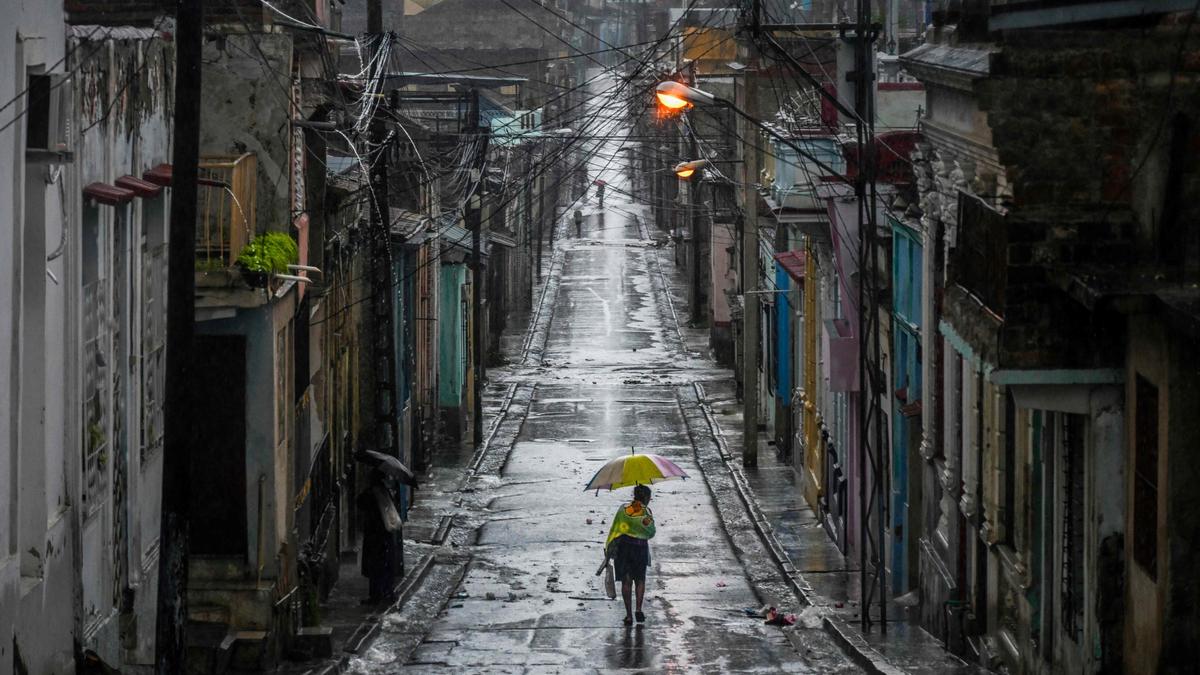Hurricane Melissa and the Rise of Extreme Atlantic Storms

IN NEWS: Hurricane Melissa and the Rise of Extreme Atlantic Storms
ANALYSIS
- Record-Breaking Intensity at Landfall
- Hurricane Melissa struck Jamaica on October 28, 2025, with 296 kmph wind speeds, tying the record for the strongest Atlantic hurricane at landfall.
- Its barometric pressure matched the 1935 Labour Day storm, considered one of the most intense in recorded Atlantic history.
- Extreme Rapid Intensification (ERI)
- While rapid intensification normally refers to gaining ≥56 kmph (30 knots) in 24 hours, Melissa achieved extreme rapid intensification, defined as a jump of ≥92 kmph in 24 hours.
- Melissa intensified by around 112 kmph in a 24-hour span, and later underwent a second intensification cycle, reaching 280 kmph before making landfall.
- Unusual Meteorological Behaviour
- Hurricanes often undergo eyewall replacement cycles when they become too strong, temporarily weakening the system.
- Melissa displayed signs of entering such a cycle but never completed it, allowing uninterrupted intensification.
- Despite hovering near mountainous Jamaica, which usually disrupts hurricane structure, Melissa remained unaffected.
- Oceanic Heat as the Primary Driver
- Warm ocean water is the main fuel for hurricanes. Some regions under Melissa were 2°C above long-term averages.
- Climate Central estimated that such warm water conditions were 500–700 times more likely due to human-induced climate change.
- Melissa stayed over one region for days, but no cold-water upwelling occurred, indicating unusually deep warm-water layers.
- Historical Trend in Category 5 Hurricanes
- A rapid Associated Press analysis shows a sharp rise in Category 5 hurricanes (brewed in Atlantic) over the past decade:
- 13 Category 5 storms from 2016–2025, including three in 2025 alone.
- Nearly 29% of all Cat-5 storms in 125 years have occurred since 2016.
- Scientists caution that pre-satellite records were less reliable, yet the trend aligns with climate-change projections that predict more intense storms even if overall storm frequency does not increase.
- A rapid Associated Press analysis shows a sharp rise in Category 5 hurricanes (brewed in Atlantic) over the past decade:
- Climate Science Attribution
- Researchers attribute Melissa’s behaviour to extreme ocean warming, providing abundant energy for sustained intensification.
- Scientific consensus suggests a direct link between warming oceans and increasing rapid-intensification events.
STATIC PORTION
- Hurricane Rapid Intensification (RI)
- Defined as an increase of ≥56 kmph (30 knots) in wind speed within 24 hours.
- Extreme Rapid Intensification (ERI) refers to increases of ≥92 kmph in 24 hours.
- Eyewall Replacement Cycle (ERC)
- Strong hurricanes often form a secondary outer eyewall.
- The inner eyewall collapses, replaced by the outer one, temporarily weakening the storm.
- Category 5 Hurricane Criteria
- On the Saffir-Simpson Hurricane Wind Scale:
- Winds ≥252 kmph.
- Represents “catastrophic damage” potential.
- On the Saffir-Simpson Hurricane Wind Scale:
- Role of Sea Surface Temperature (SST)
- SSTs above 26.5°C are necessary for hurricane formation.
- Greater heat content leads to deeper warm layers, reducing cold-water upwelling and enabling stronger storms.
- Climate Change Impact on Hurricanes
- Not necessarily more storms overall.
- But greater proportion of high-intensity storms (Category 4–5).
- More rapid-intensification events due to increased ocean heat.
Updated – 30 October 2025 | 02:56 PM IST | News Source: The Hindu